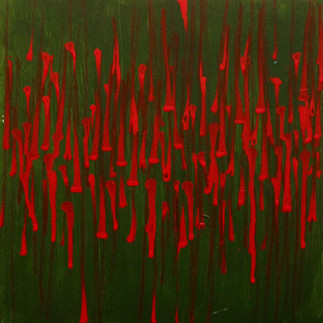Repetition and Variation
- David Joyner
- Jun 20, 2023
- 2 min read
Updated: Jun 21, 2023
This rather generalized dichotomy can really apply to most art. For instance, in Jazz, musicians will take a melodic or modal phrase and use it as a motif or connecting element for all of the instruments. Each musician will then improvise using notes and phrasing as a response thus providing variations of the original theme. The Blues and other lyrical forms of music will repeat a refrain and within the structure of the song verses elaborate on themes and narratives. Drum circles going back to ancient times experiment with repeated and varied rhythmic structures to bring entire communities together in song, dance, and ritual.
In visual art like pottery and textiles, artists repeat patterns and visual motifs to activate the surface of an object. There are often a limited range of colors and shapes within a culture, but artists discover through the process of making that there are an infinite number of variations and manipulations. New ideas or themes emerge out of repeated traditions. There are often complex meaning behind simple forms, and the varied correlation between symbols creates varied meaning. Design motifs may be decorative but are often rooted in universal signs that have more thematic weight.
Painting is intuitive for me. I don't necessarily consider thematic weight before I select a color or implement or motif. Still, there is a macro purpose at work as a body of work emerges. In an instant, I select hue, value, character, weight, scale, and intent behind each mark. Also, no brush or pen stroke exists in isolation. As the history of a work develops there is a tension between what is repeated and the contrast to varied elements. I respond to themes that emerge by either continuing or intentionally diverging. The goal is an ultimate unity or cohesion within a work and as a body of work. Repetition and variation is therefore part of both theme or meaning as well as studio process.












Comments